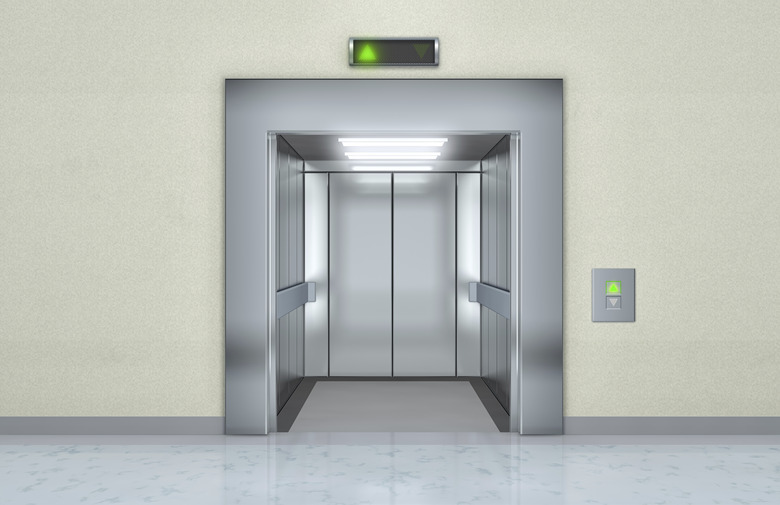How To Build A Model Elevator Science Project
Invented by Elisha Otis in 1852, elevators illustrate various interesting scientific principles. A model elevator science project can help students understand phenomena such as gravity, pulleys and counterweights. Also, elevators can illustrate Isaac Newton's second law of motion. This law says that when a force acts on an object, it will accelerate.
Simple Box Elevator
Simple Box Elevator
A simple model elevator can be made using a long piece of string attached to a cardboard box sitting on top of a table. Cut a small hole in the middle of the box top and insert the string. The string should be tied in a knot on the inside of the box so that it does not come out of the hole. The string should be long enough so that you can lower and raise the elevator from the opposite side of the table. Cut two flaps off so that only two flaps remain, looking like elevator doors. One student should go to the other side of the table and hold the string while the other lowers the box off of the table. Students can take turns lowering and lifting the elevator. This project helps students understand the up an down movement of an elevator. Explain to the students that it takes more force to raise an elevator than to lower it, because gravity pulls things down.
An Elevator with Spindles
An Elevator with Spindles
All Science Fair Projects describes the use of spindles and a counterweight to create a working elevator. Attach four spindles to the top of a piece of plywood using nails. Be sure to space the spindles evenly across the top and label them "a", "b", "c" and "d" from left to right. Attach two more spindles to the bottom of your plywood under the left two top spindles and label these "e" and "f" from left to right. There should be at least 3 feet of space between the top and bottom spindles. Tie one piece of string to the top and one to the bottom of a small cardboard box that will be your elevator car. The bottom string should loop around spindles "f", "e", "a" and "b" in that order. Attach that string to the top of the box. The other string should loop around "c" and "d" and the loose end should be tied to a counterweight that will hang on the right side of your plywood. Turning spindle "a" will make your elevator car go up and down. Counterweights are used to balance the weight in the box car so it can move up easily and won't fall to the ground.
A Box Within a Box
A Box Within a Box
Get a large box to act as a building and a smaller box to act as the elevator in the building. Make two small holes in the top of the smaller box and insert a piece of string. Tie knots in the string on the inside of the box so it doesn't slip through. Attach two u-bolts to the inner side of the top of the big box and secure them with nuts on the outside top of the box. Be sure to space the u-bolts evenly so the smaller box car can hang without hitting the side of the bigger box. Feed a rope through the u-bolts and attach one end to the string of the smaller box and the other end to a counterweight. Put small objects in the box car and use different counterweights to find the best combinations to make your elevator operate smoothly. According to Fun Stuff My Dad Makes, this model also shows the importance of the counterweight, which is needed so that the inner box doesn't crash to the ground.
Pulley System
Pulley System
Pulleys can be made using a small wheel that is mounted on an axle held in a frame. A compound pulley consists of two pulleys, and a block and tackle consists of several pulleys working together. Attach a compound pulley to a wood beam in a doorway or garage. A bucket filled with toys, blocks or sand can be attached to the rope of the pulley. Try to lift a bucket off the ground using the free end of the rope. Try the same thing using a block and tackle pulley system and compare the results. Pulleys are used to help reduce the amount of force needed to lift something or someone. This means it is harder to lift something without a pulley.
Cite This Article
MLA
Wall, Nigel. "How To Build A Model Elevator Science Project" sciencing.com, https://www.sciencing.com/how-to-build-a-model-elevator-science-project-12742289/. 2 October 2009.
APA
Wall, Nigel. (2009, October 2). How To Build A Model Elevator Science Project. sciencing.com. Retrieved from https://www.sciencing.com/how-to-build-a-model-elevator-science-project-12742289/
Chicago
Wall, Nigel. How To Build A Model Elevator Science Project last modified August 30, 2022. https://www.sciencing.com/how-to-build-a-model-elevator-science-project-12742289/
